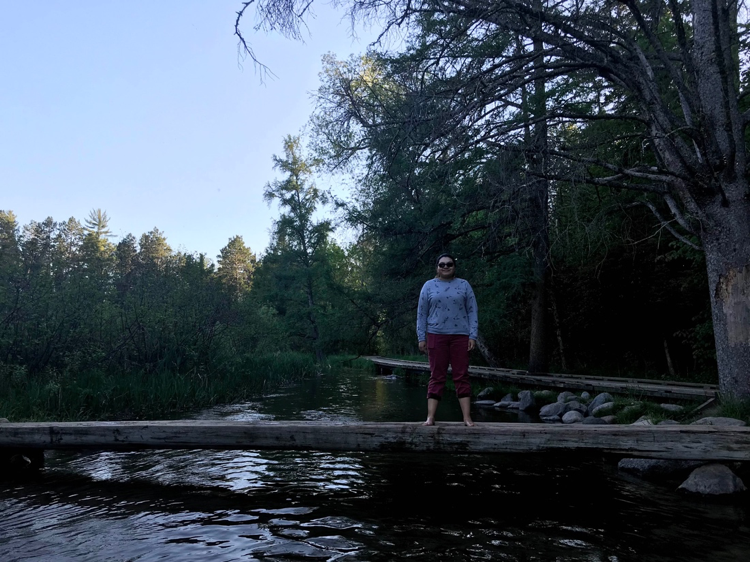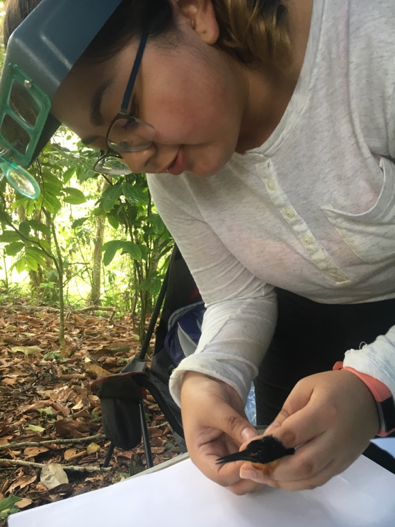[This blog was written by Scott Clem, a PhD student in the Harmon-Threatt Lab in the Department of Entomology. It is part of the SIB Student Research Experience, a blog series that offers a closer look at our students and their research.]
Hello blog readers! My name is Scott Clem and I am a doctoral candidate studying entomology at the University of Illinois. How did I end up studying insects do you ask? Well, I suppose I have always been interested in these critters, but the major defining moment was when I took my first entomology class and learned about their fascinating diversity and major ecological importance. This solidified my fate to become an entomologist. I proceeded to get my undergraduate degree in zoology with a minor in entomology at Auburn University. I then stayed at Auburn for my master’s where I studied interactions between caterpillar communities and native/non-native trees. Once I finished, I decided that I wanted to pursue a PhD at the University of Illinois’ Department of Entomology. So, here I am today!
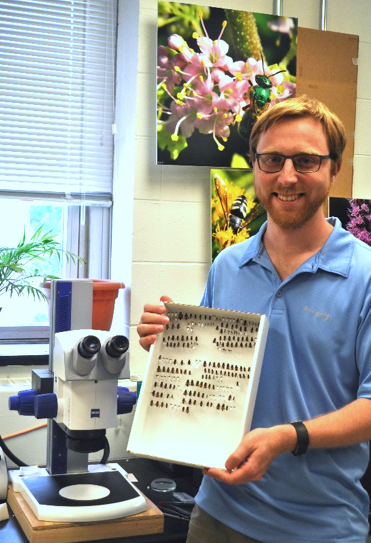
I want to share a little bit about my research at the University of Illinois, and some of my summer experiences. My dissertation is focused around a group of insects known as hover flies (Family Syrphidae). These insects are best known for visiting flowers and having yellow and black coloration, which is an attempt to mimic various bees and wasps. They’re quality pollinators as adults while the larvae of many species are predacious and feed on pesky insects like aphids. So, this is definitely a useful insect to have in the garden! My research is focused on a behavior that is not well understood in these insects: long-distance migration. How the heck does one study fly migration do you ask? Well, I can’t just give them a little radio transmitter (they don’t make them small enough), so I use stable deuterium isotopic ratios found within their tissues. Isotopes are variations of the same chemical element, in this case hydrogen, that have the same number of protons but different numbers of neutrons.
The idea is that ratios of light to heavy deuterium isotopes in water vary geographically due to differences in temperature, humidity, and other climate variables. You know the saying you are what you eat? Well, larval hover flies inadvertently consume these isotopes from water while they feed, which become permanently fixed in wing and leg tissues once the flies emerge as adults. We can then examine these isotopic ratios and estimate where the flies developed as larvae and whether they are local or foreign. If a fly exhibited isotopic ratios that were highly negative, for example, we might conclude that it developed somewhere in Canada and flew south. For my work this summer, I spent much of my time walking around in local parks with a net, looking for specific species of hover flies (mainly Eupeodes americanus and Allograpta obliqua).
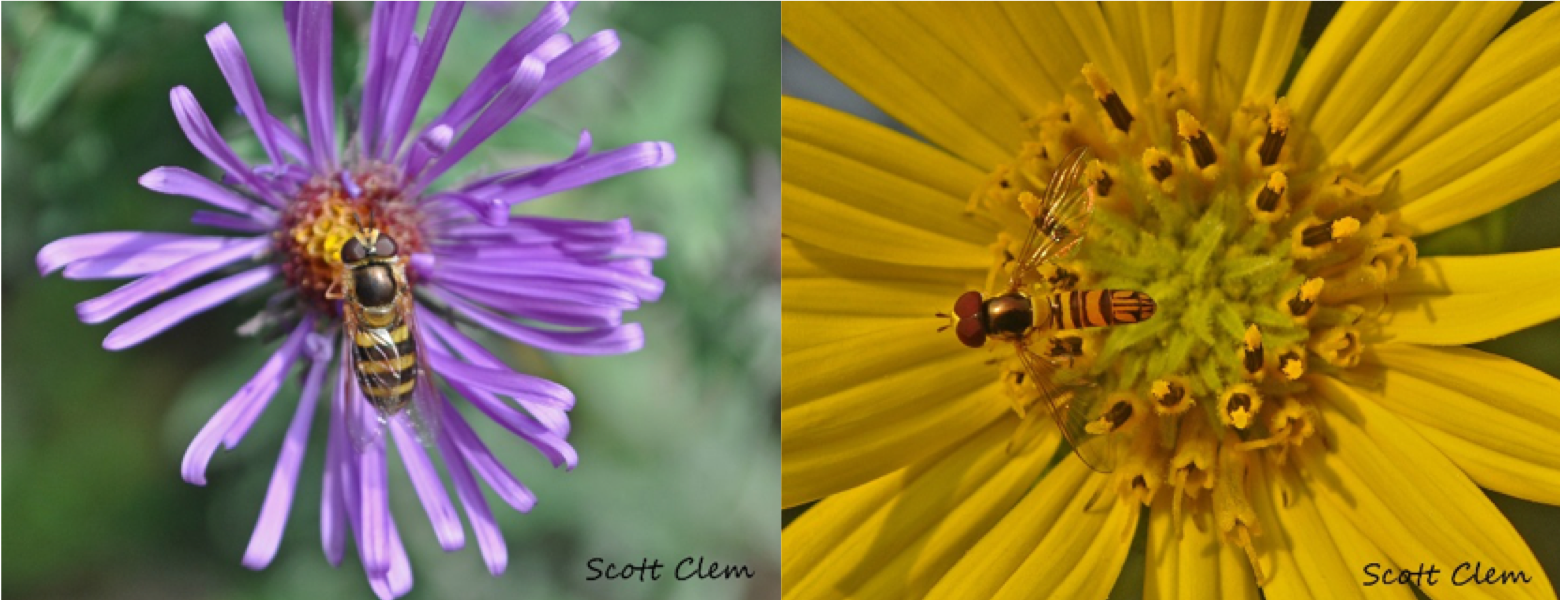
Aside from working on my summer research, I also had the opportunity to travel to Los Osos, California for two weeks to attend The Diptera Course, organized and hosted by the LA County Natural History Museum. This was the highlight of my summer, and quite honestly one of the highlights of my entomological career. For all you non-entomologists, Diptera is the order of insects that includes true flies. They are incredibly diverse and come in a huge variety of shapes and sizes, but the major characteristic that differentiates them from other insects is that they only have two wings (hence their etymology: di = two, pteron = wing). Other insects like bees and wasps have four wings.
Insects that are classified in the order Diptera include mosquitoes, maggots, gnats, midges, house flies, crane flies, hover flies, robber flies, maggots, keds, bots, and many others. The Diptera Course was dedicated strictly to learning all about flies from some of the biggest names in dipterology. We learned about fly morphology, taxonomy, phylogenetics, behavior, and much much more. There were 25 students total representing 16 countries from all over the world and we were each tasked with collecting, mounting, and identifying 40 families of flies. To put this in perspective, there are around 150,000 species of flies described, all classified into 188 families. There are probably around 1,000,000 species in existence today, so there are A LOT yet to be discovered!
Each morning we attended a lecture given by one of the instructors. After that, we grabbed our nets, aspirators (“pooters” as some might call them; devices used to vacuum up small insects via mouth suction), and any other field gear, and jumped into vans to travel to various pre-selected collecting sites. We sampled a wide variety of habitats from coastal sand dunes to mountainous scrub. Once we got back to the camp, we all unloaded our “fly loot” and started pinning, mounting, labelling, and identifying the flies we collected. All total, I ended up with 47 families of flies while the group as a whole had 72! What is the purpose of preserving flies like this? Well, many of these flies will be deposited into natural history collections. Each specimen is basically a “natural history snapshot” that represents the location and date that the fly was collected. This can then be used to answer questions about taxonomy, conservation, phylogenetics, disease vector ecology, and many more.
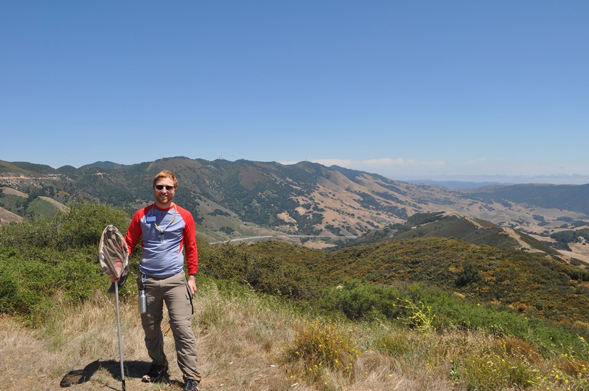
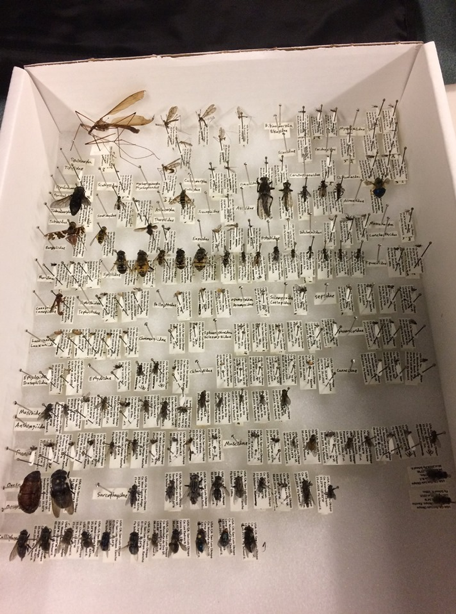
You might be wondering, what’s the coolest fly I collected? Well, I’m split because there are so many stinkin’ cool flies that I saw, but I’ll narrow it down to two. The first one is Eulonchus smaragdinus of the family Acroceridae (small-headed flies). This fly is particularly showy because of its bright blue/green iridescence, yellow legs, and a proboscis (a flexible mouthpart) that is nearly twice its body length! It tucks this proboscis under its body while flying and brings it out to sip nectar from trumpet-like flowers. We collected them on high-altitude mountain slopes feeding on monkey flowers of the genus Diplacus.The biology of this fly is astounding. The adults will conceive up to 5,000 eggs and then deposit them on the ground. Upon hatching, the planidial larva waits to grab onto ground-dwelling spiders which happen to pass by. It will crawl up the spider’s leg and force its way inside the spider’s body where it remains for years as a parasite. It will eventually grow and emerge as an adult to start the cycle over.
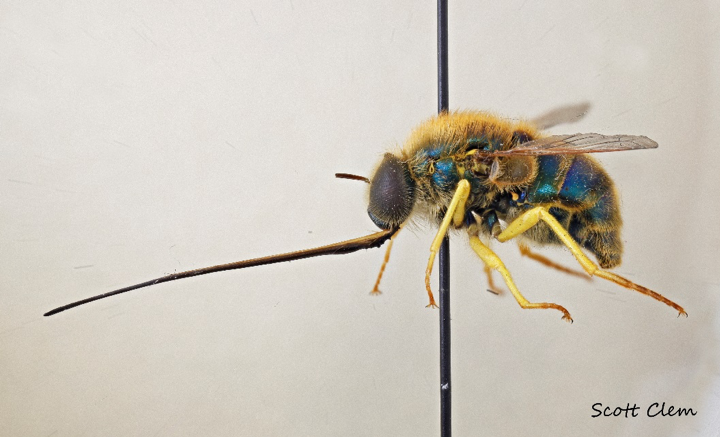
Another pretty cool fly we collected is of the genus Cuterebra, which are collectively known as rodent bot flies from the family Oestridae. This insect has a pretty gruesome life cycle. Adult females, which have no mouthparts and more or less resemble bumble bees (see below), will lay their eggs near mammal burrows. The body heat of an unsuspecting mammal host triggers the eggs to hatch. Larvae then attach themselves to that host, and burrow under the skin to feed on flesh. Infected hosts have tumor-like bulges with the larva’s spiracles sticking out to breath. Lucky for us, the closely related human bot fly does not occur in North America! We managed to collect these rare flies at the top of a mountain, a great place to sample because of a behavior known as “hill-topping.” This is where insects including flies, butterflies, dragonflies, etc. will gather at the highest point in an area to compete for mates.
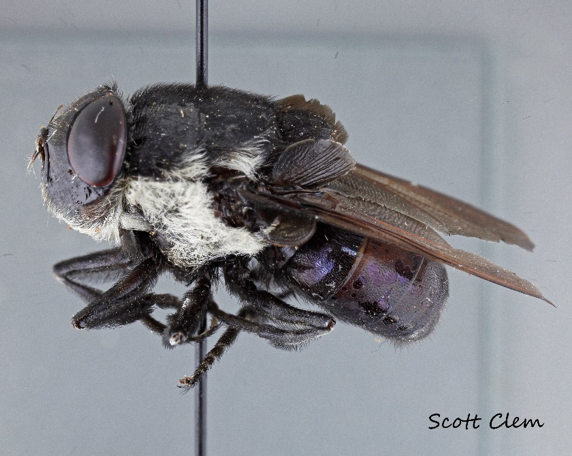
Where am I going with all this insect knowledge? Well, I will be wrapping up my research and finishing up my program here at Illinois within the next two years. I hope to continue research that advocates for insect conservation and sustainable pest management, and to teach people why insects are awesome and why it is in our best interest to keep them around. Just by reading this blog, I hope that I have inspired at least some of you to appreciate these critters!


